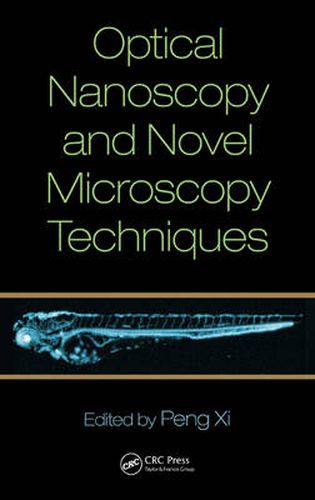Readings Newsletter
Become a Readings Member to make your shopping experience even easier.
Sign in or sign up for free!
You’re not far away from qualifying for FREE standard shipping within Australia
You’ve qualified for FREE standard shipping within Australia
The cart is loading…






Microscopy is at the forefront of multidisciplinary research. It was developed by physicists, made specific by chemists, and applied by biologists and doctors to better understand how the human body works. For this very reason, the field has been revolutionized in past decades.
The objective of Optical Nanoscopy and Novel Microscopy Techniques is to choose some of those revolutionary ideas and serve a general audience from broad disciplines to achieve a fundamental understanding of these technologies and to better apply them in their daily research.
The book begins with coverage of super-resolution optical microscopy, which discusses targeted modulation such as STED and SIM or localization methods such as PALM. It then discusses novel development of fluorescent probes, such as organic small-molecule probes, fluorescent proteins, and inorganic labels such as quantum dots. Finally, it describes advanced optical microscopy, such as fluorescence lifetime imaging, fiber optic microscopy, scanning ion conductance microscopy, and the joining of optics and acoustics-photoacoustic microscopy. Following each chapter, a detailed list of references is provided. Problems at the end of each chapter are also included.
$9.00 standard shipping within Australia
FREE standard shipping within Australia for orders over $100.00
Express & International shipping calculated at checkout
Microscopy is at the forefront of multidisciplinary research. It was developed by physicists, made specific by chemists, and applied by biologists and doctors to better understand how the human body works. For this very reason, the field has been revolutionized in past decades.
The objective of Optical Nanoscopy and Novel Microscopy Techniques is to choose some of those revolutionary ideas and serve a general audience from broad disciplines to achieve a fundamental understanding of these technologies and to better apply them in their daily research.
The book begins with coverage of super-resolution optical microscopy, which discusses targeted modulation such as STED and SIM or localization methods such as PALM. It then discusses novel development of fluorescent probes, such as organic small-molecule probes, fluorescent proteins, and inorganic labels such as quantum dots. Finally, it describes advanced optical microscopy, such as fluorescence lifetime imaging, fiber optic microscopy, scanning ion conductance microscopy, and the joining of optics and acoustics-photoacoustic microscopy. Following each chapter, a detailed list of references is provided. Problems at the end of each chapter are also included.